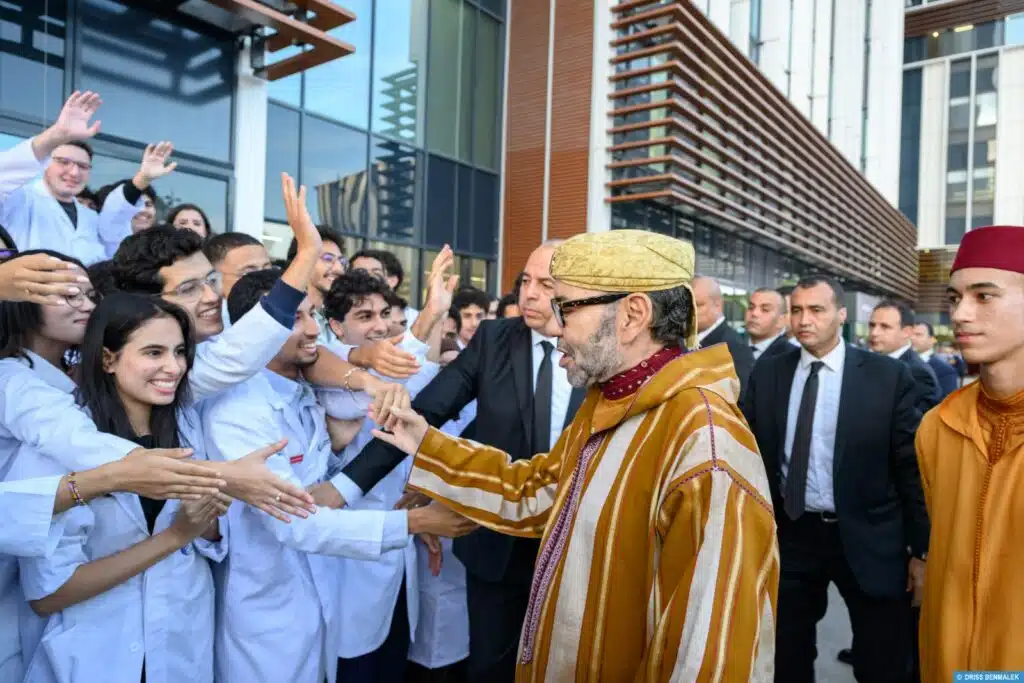King Mohammed VI, accompanied by Crown Prince Moulay El Hassan, officially opened the new Mohammed VI International University Hospital Complex in Rabat on Monday—a state-of-the-art facility that marks a major leap forward in Morocco’s healthcare system. On the same day, the King also gave the green light for the launch of the Mohammed VI University Hospital in Agadir, aimed at significantly boosting medical services in the Souss-Massa region.
Built on a sprawling 280,000-square-meter site, the Rabat complex brings together two complementary institutions: a 190,000-square-meter university hospital and a 90,000-square-meter health sciences university. Developed under the leadership of the Mohammed VI Foundation for Science and Health, the project reflects the King’s strategic vision for a more equitable and technologically advanced healthcare system, providing high-quality treatment and training opportunities for all citizens.

The hospital in Rabat has an initial capacity of 600 beds, expandable to 1,000, and is equipped with more than 30 medical and surgical departments, including specialties like robotic surgery, oncology, interventional cardiology, and neurosurgery. It features 24 operating rooms—19 of which are part of an integrated surgical block—and 143 beds dedicated to critical care. Several of the hospital’s technologies are firsts for both Morocco and the African continent, such as the PET-MRI, the 3T Omega MRI, and a fully robotic hospital pharmacy.
Patients will also benefit from hyperbaric and hypobaric oxygen therapy, a dedicated burn treatment unit, and Africa’s first fully automated laboratory platform, handling every phase of the analysis process. A digitalized pathology lab adds further precision to the hospital’s diagnostic capabilities.

The adjoining university is designed to accommodate up to 8,000 students and includes six faculties and specialized schools covering fields from medicine to health engineering. A cutting-edge medical simulation center forms the core of a modern academic hub focused on training the next generation of healthcare professionals.
Sustainability is a key feature of the complex, which has earned an “exceptional” rating under the High Environmental Quality (HQE) certification. Its 8,800 square meters of solar panels generate 10% of its total energy needs and help cut carbon emissions by 40%.
Down south in Agadir, the new Mohammed VI University Hospital is built with the same forward-looking mindset. Located on a 30-hectare site and covering 127,000 square meters, the facility represents a 3.1 billion dirham investment. It offers 867 beds spread across specialized departments, a central surgical block with 19 operating rooms, emergency and burn units, and comprehensive training infrastructure.
A standout feature of the Agadir hospital is the integration of the “Revo I” surgical robot—the first of its kind in Africa—allowing for highly precise, minimally invasive procedures. The hospital also boasts two cardiac catheterization labs, a state-of-the-art intensive care unit, and a centralized robotic pharmacy system, ensuring secure and traceable treatment processes.
This next-generation hospital is expected to serve over 3 million people in the region, drastically reducing the need for patients to travel long distances for complex procedures. It’s also set to become a major driver of local development, creating thousands of direct and indirect jobs.
With these two ambitious projects, Morocco reaffirms its commitment to building a modern, accessible, and future-ready healthcare system—one that not only meets current medical needs but also strengthens human development at a national scale.